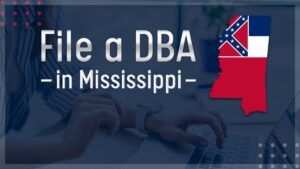Board composition has come to be one of the most contentious issues in governance. This prominence has been driven largely by claims that boards are inherently self selecting and that this excludes dissenting views from independent thinkers as well as ‘minorities’ and women . In the government sector this is definitely not the case as a single active shareholder makes the appointment and composition decisions.
In the government sector, when criticism is levelled at the composition of boards it is usually based on a perception of political bias, ‘jobs for the boys’, or ‘Minister’s Mates’. This may have been justified in the past but is now becoming a practice confined to history as board members are increasingly selected based upon skills, interests and ability to contribute. The process of board selection has become increasingly professional and many jurisdictions now advertise board positions, use professional recruiters and run scrupulous processes that would impress many private sector organisations if they were privy to them.
In the non-profit sector there is often a tendency to draw board members from a small group of known and willing supporters. In some jurisdictions board membership is conferred upon the major donors, almost as a reward, and this practice, whilst delivering a board that have definitely provided real support to the organisation can lead to a board without governance ability or with an unbalanced set of competences.
COMPOSITION
In designing the composition of a board a number of factors should be considered. The size of the board must be optimised so that it complies with the legislation and/or constitution, is affordable, is not too big to operate effectively, and contains most (if not all) of the skills required to guide the organisation as it embarks on its strategy.
Carter McNamara identifies four potential philosophical bases for board composition, each of which is compatible with a skills based board:
• Functional: Boards staffed primarily with members who have the skills and knowledge to address current strategic priorities such as staffing, programs, planning, finances, etc. This approach provides a board that is capable of adding value through close supervision and leadership of the management team. It can have the drawback of increased likelihood that members will rely upon each others’ expertise rather than making full and independent analysis of matters brought to the board.
• Diversification: Boards staffed primarily with members that represent a variety of different cultures, values, opinions and perspectives. This approach provides a board that is capable of holistic decision-making and unlikely to exclude, forget, or discriminate against certain groups of people or issues. Governments often use this approach in combination with the others to assist with societal objectives such as the inclusion of minorities or the advancement of people from certain sectors. It can have the drawback of taking time to reach decisions because of the large data sets that are analysed and can tend towards a lack of unity or collegiality among board members.
• Representative: Boards staffed primarily with members who represent the major constituents of the organisation. This approach provides board members who are able to accurately assess the impact of the board upon its stakeholders. It can have the drawback of exposing members to lobbying from their constituents and creates conflicts of interest that must be managed.
• Passion: Boards staffed primarily with people who have a strong passion for the mission of the organisation. This approach provides members who will give unstintingly of their time and effort and who will often investigate issues and create innovative solutions because they will not accept the status quo. It can have the drawback of ‘exciting’ meetings in which passionate expositions are the normal interaction and is often more prone to leaks, conflicts and impasses than the functional boards.
It is not necessary to use only one philosophical approach and often at the beginning of the process the conversation about board composition will range across ‘who has the hard skills’, ‘what about an aboriginal or female member?’, ‘can we get someone from the industry group?’, and ‘how about X, he/she is so passionate about this it would be a shame to pass up on the opportunity to harness that?’
The important thing to keep in mind is that the board must operate as a team and contain all the skills and experience required to govern the organisation.
What do you think?
______________________________________
Julie Garland-McLellan has been internationally acclaimed as a leading expert on board governance. See her website and LinkedIn profiles, and get her books Dilemmas, Dilemmas: Practical Case Studies for Company Directors and Presenting to Boards.
Some thoughts on board composition
 Sections of this topic
Sections of this topic
Recommended for you
















